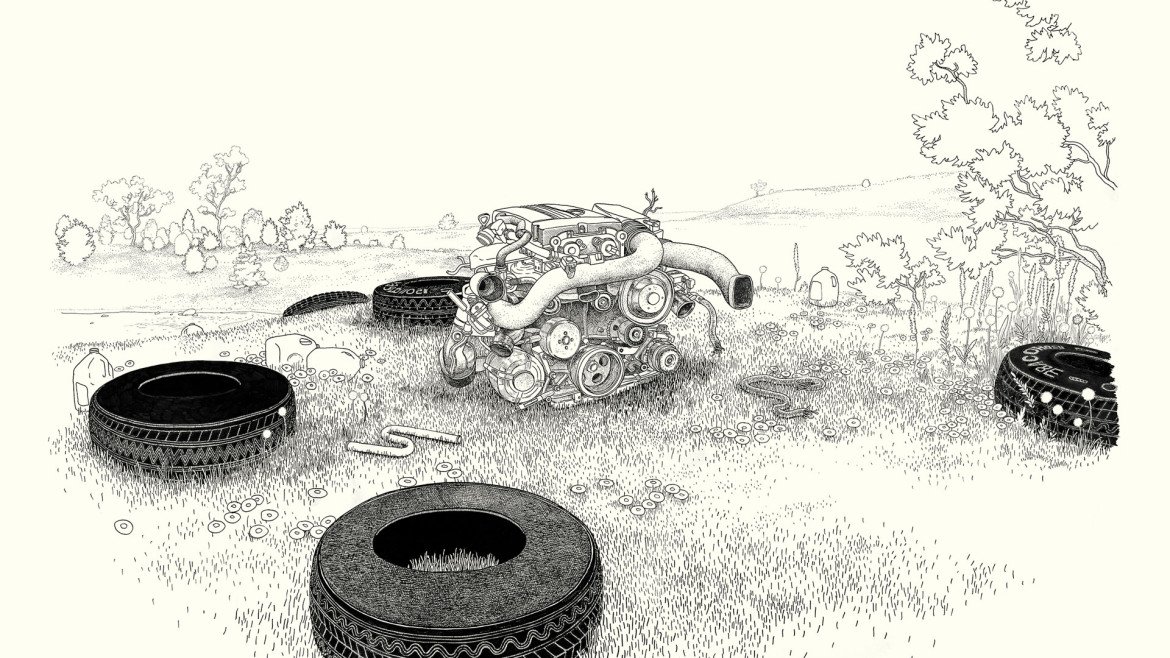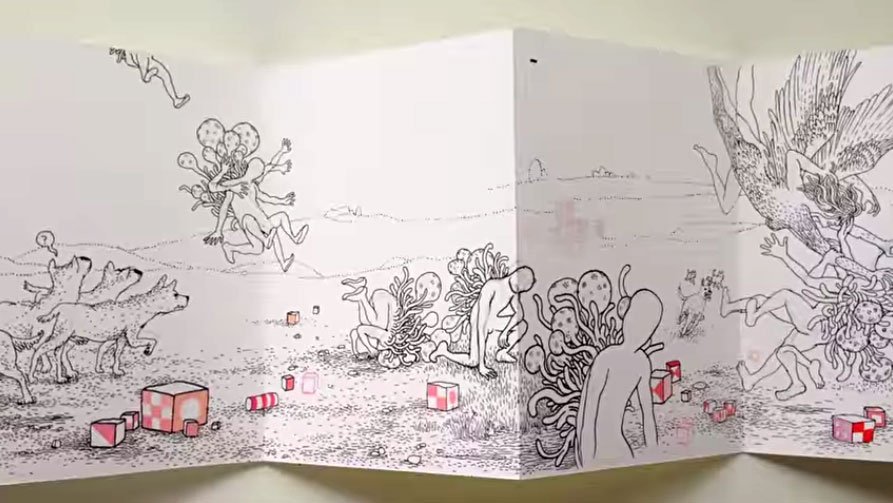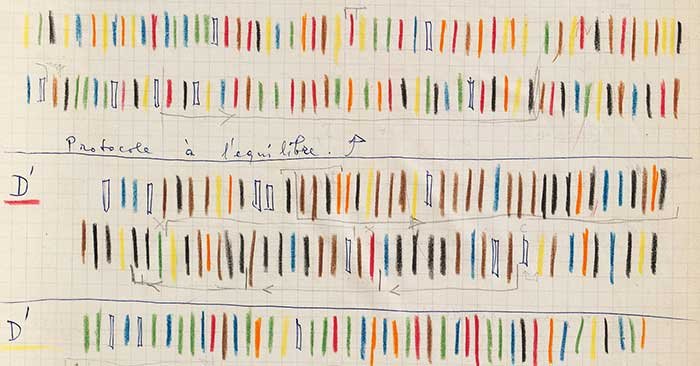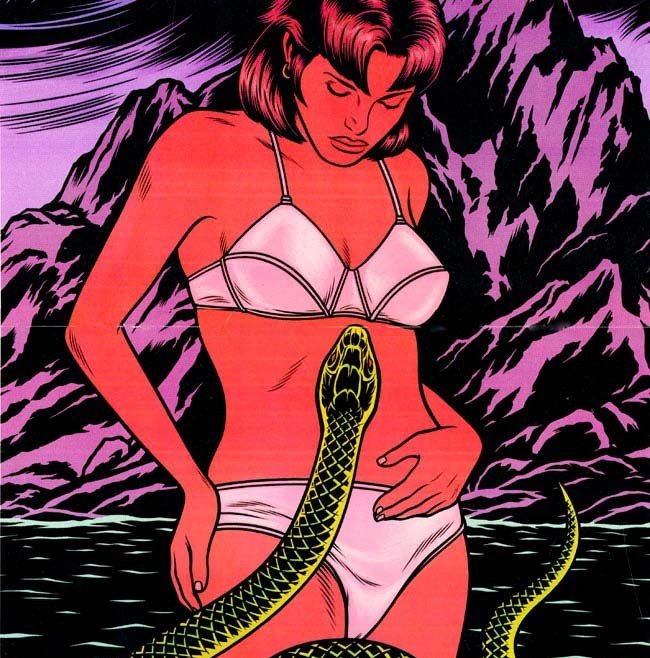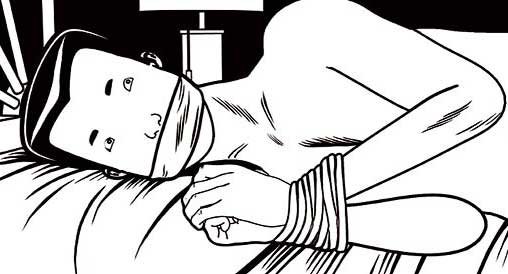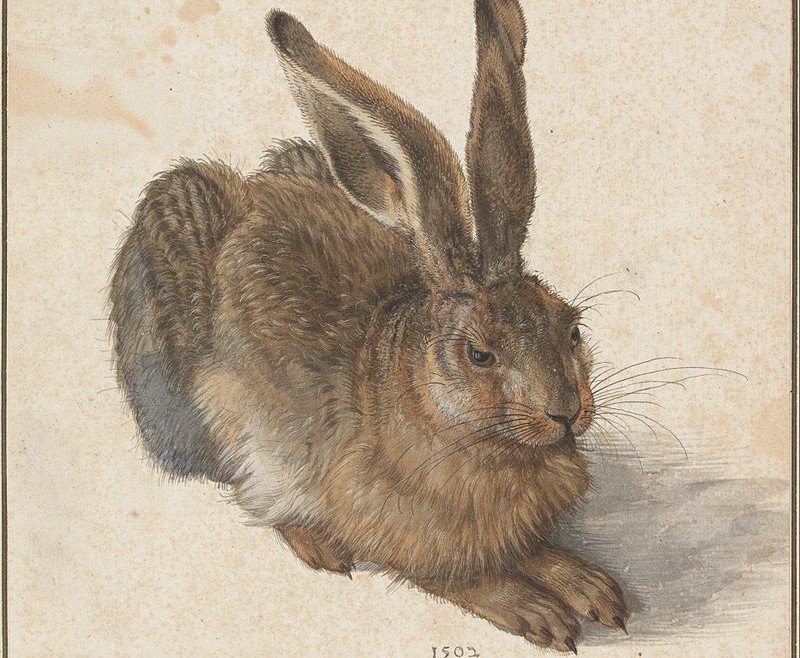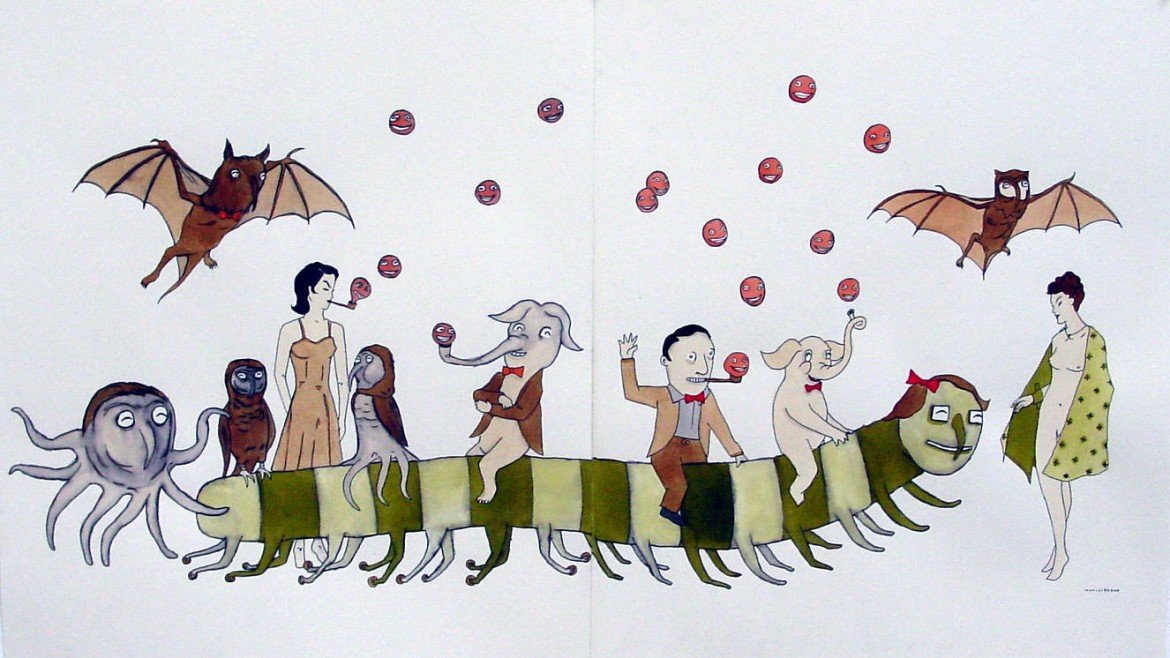The Drawing Center/Le Prix Canson – 2016
https://linesandmarks.com/wp-content/uploads/njideka-akunyili-crosby_nwantinti-2012.jpg 1080 786 Lines & Marks Lines & Marks https://linesandmarks.com/wp-content/uploads/njideka-akunyili-crosby_nwantinti-2012.jpgHeader Image: Njideka Akunyili Crosby, “Nwantinti,” 2012. Acrylic, charcoal, pencil color, collage and transfers on paper. 5.57 ft. x 8 ft. [Photograph by Marc Bernier. Image Courtesy of the artist and Victoria Miro, London]
“The way I mix painting with drawing, printmaking, photography, and collage in my work underscores the theme of transculturation in my life.” - Njideka Akunyili Crosby
Njideka Akunyili Crosby, “Cassava Garden,” 2015. Acrylic, transfers, colored pencils, charcoal and commemorative fabric on paper. 6 ft. x 5 ft. [Photograph by Robert Glowacki. Image Courtesy of the artist and Victoria Miro, London.]
Since 2010, paper company Canson founded Le Fonds Canson pour l’Art et le Papier to support drawing and works on paper via their prestigious Prix CansonAbout the Prix CansonCreated in 2010 by the Fonds Canson pour l’Art et le Papier, the Prix Canson honours the exceptional work of an artist under the age of 50, whose creations show a true love of paper. The prize is awarded by a jury composed of international key figures from the art world, artists, curators and directors of leading institutions dedicated to contemporary art around the world. The Prix Canson awards the prize-winner by elevating the visibility of their artwork internationally as each winner sees their work showcased in at least one major contemporary art fair or museum, consequently benefitting from accrued media exposure. In addition, the winner receives an important endowment in kind from Canson paper worth €10,000. And finally, the Fonds Canson also acquires an art piece of the winner for their collection. Since it has been founded, the prize has been awarded to artists Fabien Merelle (2010), Ronald Cornelissen (2011), Virginia Chihota (2013), Simon Evans (2014) and Adrián Villar Rojas (2015). The Fonds Canson pour l’Art et le Papier aims to make the Prix Canson an increasingly international prize. award. The prize, which includes a solo exhibit and €10,000 worth of Canson paper, recognizes exceptional work of artists under 50 whose creations “show a true love of paper.”
In its 2016 edition, the Prix Canson partnered with The Drawing Center in New York to honor the winner, Njideka Akunyili Crosby, as well as the finalists with an exhibition from June 22 – July 1. Prix Canson Exhibitions have usually been held in major art institutions in Paris and Barcelona, but the collaboration with the The Drawing CenterHistoryThe Drawing Center, a museum in Manhattan"s SoHo district, was founded in 1977 by Martha Beck, the former assistant curator of drawings at the Museum of Modern Art. The center explores the medium of drawing as primary, dynamic, and relevant to contemporary culture, the future of art, and creative thought. Its activities, which are both multidisciplinary and broadly historical, include exhibitions, Open Sessions, a curated artist program encouraging community and collaboration, the Drawing Papers publication series, and education and public programs. Location, Hours & Accessibility 35 Wooster Street between Broome and Grand Streets in SoHo, New York. was inspired by a “shared passion for drawing and by their ambition to promote art to wide and diverse audiences.” To support the exhibition at The Drawing Center, Canson hosted a series of talks, presentations, and events with the finalists for the public and press.
Modern, post-Papyrus, paper-making using fibers is usually attributed to China in 105 B.C.E. (though a map on paper was found even earlier at Fangmatan in Gansu province, 179-41 B.C.E.). Le Fonds Canson has been a part been part of that long history for the past 450 yearsAbout Fonds CansonCanson was established in 1557 in Annonay (France) by the Montgolfier family. Canson, heir of nearly half a millennium of expertise, has managed to perpetuate a tradition of master papermakers, passing down the recipe for high-quality paper from generation to generation. Throughout the course of the centuries, the greatest artists and creators have used Canson paper: Ingres, Delacroix, Van Gogh, Degas, Matisse, Picasso, Dalí, Miró, Warhol. From the start, the founding family Montgolfier’s motto was ‘Ite per orbem’ (Go out into the world), already illustrating the company’s open international spirit. In 1926, Canson and Montgolfier incorporated and inaugurated their fisrt New York branch. Today, Canson paper is sold in nearly 150 countries all over the world, and the company is the world leader in art paper. Canson has always believed in a ‘higher’ purpose than simply making quality paper and so it pledges to sponsor modern art and to celebrate contemporary artists.. Since 1557, Canson paper has been used by renowned artists such as Jean Auguste Dominique Ingres (1780-1867), Pablo Picasso (1881-1973), Marc Chagall (1887-1985), Fernand Leger (1881-1955), Aristide Maillol (1861-1944), Eugène Delacroix (1798-1863), Vincent Van Gogh (1853-1890), Edgar Degas (1834-1917), Henri Matisse (1869-1964), Salvador Dalí (1904-1989), Joan Miró (1893-1983), Andy Warhol (1928-1987), and now by a new generation of artists including the 2016 prize winner, Njideka Akunyili CrosbyBiography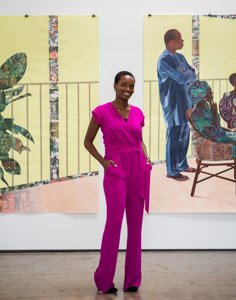 Njideka Akunyili Crosby was born in 1983 in Enugu, Nigeria and currently lives and works in Los Angeles. Informed by art historical and literary sources, Njideka Akunyili Crosbys complex, multi-layered works reflect contemporary transcultural identity. Combining drawing, painting and collage on paper, Akunyili Crosbys large-scale figurative compositions are drawn from the artist’s memories and experiences. She uses the visual language and inherited traditions of classical academic western painting, particularly the portrait and still life. Akunyili Crosby’s characters and scenes, however, occupy the liminal, in-between zone that post-colonial theorist Homi K. Bhabha refers to as ‘the third space’, a point of overlap, conflation and mixing of cultural influences specific to diaspora communities. She is the 2015 recipient of the Joyce Alexander Wein Artist Prize from the Studio Museum in Harlem. She received her MFA from Yale University of Art and her BA from the Studio Museum in Harlem. She received her MFA from Yale University of Art and her BA (Honors) from Swarthmore College., as well as the finalists, ruby onyinyechi amanzeBiography
Njideka Akunyili Crosby was born in 1983 in Enugu, Nigeria and currently lives and works in Los Angeles. Informed by art historical and literary sources, Njideka Akunyili Crosbys complex, multi-layered works reflect contemporary transcultural identity. Combining drawing, painting and collage on paper, Akunyili Crosbys large-scale figurative compositions are drawn from the artist’s memories and experiences. She uses the visual language and inherited traditions of classical academic western painting, particularly the portrait and still life. Akunyili Crosby’s characters and scenes, however, occupy the liminal, in-between zone that post-colonial theorist Homi K. Bhabha refers to as ‘the third space’, a point of overlap, conflation and mixing of cultural influences specific to diaspora communities. She is the 2015 recipient of the Joyce Alexander Wein Artist Prize from the Studio Museum in Harlem. She received her MFA from Yale University of Art and her BA from the Studio Museum in Harlem. She received her MFA from Yale University of Art and her BA (Honors) from Swarthmore College., as well as the finalists, ruby onyinyechi amanzeBiography Born in Nigeria in 1982, ruby amanze onyinyechi lives and works in New York. ruby onyinyechi amanze is a visual artist whose practice is primarily centered around drawing and works on paper. Her large scale drawings are part of an ongoing, non-linear narrative called aliens, hybrids and ghosts and explore space, play, and cultural hybridity. Existing somewhere between constructed reality, fantasy, memory and imagination, these pencil-and-ink drawings on paper embellished with glitter and fluorescent pen invent a space where ethnic and cultural borders seemed to be abolished. "This isn"t social science, it"s magic-realism and the power of drawing to invent worlds for ourselves. I"m a story-teller, not an advocate," she says. amanze immediately relocated to the U.K, prior to moving to the U.S. In 2012-2013, she was the recipient of a Fulbright Scholars Award in Drawing to the University of Nigeria, Nsukka. She currently resides in New York where she is an Artist-in-Residence at the Queens Museum and in The Drawing Center’s Open Sessions Program., Bethany CollinsBiography
Born in Nigeria in 1982, ruby amanze onyinyechi lives and works in New York. ruby onyinyechi amanze is a visual artist whose practice is primarily centered around drawing and works on paper. Her large scale drawings are part of an ongoing, non-linear narrative called aliens, hybrids and ghosts and explore space, play, and cultural hybridity. Existing somewhere between constructed reality, fantasy, memory and imagination, these pencil-and-ink drawings on paper embellished with glitter and fluorescent pen invent a space where ethnic and cultural borders seemed to be abolished. "This isn"t social science, it"s magic-realism and the power of drawing to invent worlds for ourselves. I"m a story-teller, not an advocate," she says. amanze immediately relocated to the U.K, prior to moving to the U.S. In 2012-2013, she was the recipient of a Fulbright Scholars Award in Drawing to the University of Nigeria, Nsukka. She currently resides in New York where she is an Artist-in-Residence at the Queens Museum and in The Drawing Center’s Open Sessions Program., Bethany CollinsBiography Born in 1984 in the United States Bethany Collins works in New York, Atlanta and Chicago. Bethany Collins is a multidisciplinary artist who takes the material of the classroom––paper, Pink Pearl erasers, graphite, old dictionaries and, more broadly, language itself––to create spare, poetically charged works on paper, objects and wall-based installations. Her work is fueled by a critical exploration of how race and language interact. Collins transfers and obscures dictionary definitions, government reports and historical publications to create restrained statements that ring with emotive power. She is exhibited at the Birmingham Museum of Art this year. She is represented by Richard Gray Gallery, New York, David ShrigleyBiography
Born in 1984 in the United States Bethany Collins works in New York, Atlanta and Chicago. Bethany Collins is a multidisciplinary artist who takes the material of the classroom––paper, Pink Pearl erasers, graphite, old dictionaries and, more broadly, language itself––to create spare, poetically charged works on paper, objects and wall-based installations. Her work is fueled by a critical exploration of how race and language interact. Collins transfers and obscures dictionary definitions, government reports and historical publications to create restrained statements that ring with emotive power. She is exhibited at the Birmingham Museum of Art this year. She is represented by Richard Gray Gallery, New York, David ShrigleyBiography Born in 1968 David Shrigley lives and works in Brighton, United Kingdom. David Shrigley is best known for his distinctive drawing style and works that make satirical comments on everyday situations and human interactions. His quick-witted drawings and hand-rendered texts are typically deadpan in their humour and reveal chance utterings like snippets of over-heard conversations. Reoccurring themes and thoughts pervade his story telling capturing child-like views of the world, the perspective of aliens and monsters or the compulsive habits of an eavesdropper shouting out loud. In 2013, Shrigley was shortlisted for the Turner Prize. Among his recent solo shows: Lose Your Mind, British Council in Guadalajara, Mexico (2016), Drawings and Paintings, Stephen Friedman, London (2016) and soon, Rose Art Museum, Massachussets., and Lucy SkaerBiography
Born in 1968 David Shrigley lives and works in Brighton, United Kingdom. David Shrigley is best known for his distinctive drawing style and works that make satirical comments on everyday situations and human interactions. His quick-witted drawings and hand-rendered texts are typically deadpan in their humour and reveal chance utterings like snippets of over-heard conversations. Reoccurring themes and thoughts pervade his story telling capturing child-like views of the world, the perspective of aliens and monsters or the compulsive habits of an eavesdropper shouting out loud. In 2013, Shrigley was shortlisted for the Turner Prize. Among his recent solo shows: Lose Your Mind, British Council in Guadalajara, Mexico (2016), Drawings and Paintings, Stephen Friedman, London (2016) and soon, Rose Art Museum, Massachussets., and Lucy SkaerBiography Born in 1975 in Cambridge, United Kingdom Lucy Skaer lives and works in Glasgow. Throughout her practice, in sculpture, print, drawing, and film, Lucy Skaer mines the conceptual possibilities of each in order to examine the shifts between dimensions, to explore the gap between object and image, and to represent the gradations between these mediums. The artist includes in her artworks an intimate language made of geometric and fundamental figures. Beyond a visible diversity, these pieces of art explore the mechanisms from where we give a meaning to the objects we believe we know: blew up press images reproducing well-known paintings, reworked old movies extracts through abstraction; rebuilt disseminated fragments... These large scales works on paper often participate in her installation’s scenography. In 2009, Skaer was shortlisted for the Turner Prize, and in 2007, she represented Scotland at the 52nd Venice Biennale. She is represented by Murray Guy Gallery (New York).
Born in 1975 in Cambridge, United Kingdom Lucy Skaer lives and works in Glasgow. Throughout her practice, in sculpture, print, drawing, and film, Lucy Skaer mines the conceptual possibilities of each in order to examine the shifts between dimensions, to explore the gap between object and image, and to represent the gradations between these mediums. The artist includes in her artworks an intimate language made of geometric and fundamental figures. Beyond a visible diversity, these pieces of art explore the mechanisms from where we give a meaning to the objects we believe we know: blew up press images reproducing well-known paintings, reworked old movies extracts through abstraction; rebuilt disseminated fragments... These large scales works on paper often participate in her installation’s scenography. In 2009, Skaer was shortlisted for the Turner Prize, and in 2007, she represented Scotland at the 52nd Venice Biennale. She is represented by Murray Guy Gallery (New York).
This year’s jury consisted of international museum curators including Ian AlteveerBiography Ian Alteveer is Associate Curator in the Met’s Department of Modern and Contemporary Art (The Metropolitan Museum of Art), where he organized the past three Roof Garden Commissions. Also at the Met he installed William Kentridge: The Refusal of Time (2013–14) and Regarding Warhol: Sixty Artists, Fifty Years (2012). He worked on the Met’s presentations of Ellsworth Kelly (2012), Richard Serra (2011), John Baldessari (2010), Francis Bacon (2009), and Jasper Johns (2008) and is currently co-organizing a Kerry James Marshall retrospective. Prior to joining the Met, Ian was graduate curatorial fellow and curatorial assistant at New York University’s Grey Art Gallery., Associate Curator, Department of Modern and Contemporary Art at The Metropolitan Museum of Art, New York, USA; Bice CurigerBiography
Ian Alteveer is Associate Curator in the Met’s Department of Modern and Contemporary Art (The Metropolitan Museum of Art), where he organized the past three Roof Garden Commissions. Also at the Met he installed William Kentridge: The Refusal of Time (2013–14) and Regarding Warhol: Sixty Artists, Fifty Years (2012). He worked on the Met’s presentations of Ellsworth Kelly (2012), Richard Serra (2011), John Baldessari (2010), Francis Bacon (2009), and Jasper Johns (2008) and is currently co-organizing a Kerry James Marshall retrospective. Prior to joining the Met, Ian was graduate curatorial fellow and curatorial assistant at New York University’s Grey Art Gallery., Associate Curator, Department of Modern and Contemporary Art at The Metropolitan Museum of Art, New York, USA; Bice CurigerBiography Bice Curiger is an Art Historian and Artistic Director of the Fondation Vincent van Gogh Arles. She is also editor and co-founder of Parkett, published in Zurich and New York, and has been a curator at Kunsthaus Zurich for twenty years. In 2011 she was the director of the 53rd Venice Biennale. She is the author of many books, catalogues, and articles on Meret Oppenheim, Sigmar Polke, Katharina Fritsch, Maurizio Cattelan, Rebecca Warren, among others., Artistic Director of the Fondation Vincent van Gogh, Arles, France and Editor in Chief of Parkett, Zurich, Switzerland; Amanda HuntBiography
Bice Curiger is an Art Historian and Artistic Director of the Fondation Vincent van Gogh Arles. She is also editor and co-founder of Parkett, published in Zurich and New York, and has been a curator at Kunsthaus Zurich for twenty years. In 2011 she was the director of the 53rd Venice Biennale. She is the author of many books, catalogues, and articles on Meret Oppenheim, Sigmar Polke, Katharina Fritsch, Maurizio Cattelan, Rebecca Warren, among others., Artistic Director of the Fondation Vincent van Gogh, Arles, France and Editor in Chief of Parkett, Zurich, Switzerland; Amanda HuntBiography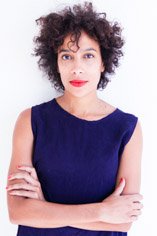 Amanda Hunt is Assistant Curator at The Studio Museum in Harlem where she manages the 2015-16 Artist in Residence program, and has curated many artists shows. Hunt curated Portland2014 - A Biennial of Contemporary Art in Portland, Oregon, and was a curator at LA-ART from 2011-2014. Hunt has worked at various galleries and institutions including Whitechapel Gallery, London, Friedrich Petzel Gallery, New York, the Wattis Institute for Contemporary Arts, San Francisco, and the Philadelphia Museum of Art. Hunt helped to produce two major initiatives in Los Angeles, including the Pacific Standard Time Performance and Public Art Festival, and Made in LA 2012., assistant curator at the Studio Museum in Harlem; Helen MolesworthBiography
Amanda Hunt is Assistant Curator at The Studio Museum in Harlem where she manages the 2015-16 Artist in Residence program, and has curated many artists shows. Hunt curated Portland2014 - A Biennial of Contemporary Art in Portland, Oregon, and was a curator at LA-ART from 2011-2014. Hunt has worked at various galleries and institutions including Whitechapel Gallery, London, Friedrich Petzel Gallery, New York, the Wattis Institute for Contemporary Arts, San Francisco, and the Philadelphia Museum of Art. Hunt helped to produce two major initiatives in Los Angeles, including the Pacific Standard Time Performance and Public Art Festival, and Made in LA 2012., assistant curator at the Studio Museum in Harlem; Helen MolesworthBiography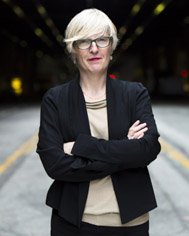 Helen Molesworth is the Chief Curator at MOCA (The Museum of Contemporary Art), Los Angeles. From 2010-2014 she was the Barbara Lee Chief Curator at the Institute of Contemporary Art (ICA) Boston, where she assembled exhibitions of artists Steve Locke, Catherine Opie, Josiah McElheny, and Amy Sillman. She was also the head of the Department of Modern and Contemporary Art at the Harvard Art Museum. From 2002 to 2007, she was the Chief Curator of Exhibitions at the Wexner Center for the Arts, and Curator of Contemporary Art at The Baltimore Museum of Art from 2000-2002. She is the author of numerous catalogue essays., Chief Curator, Museum of Contemporary Art (MOCA), Los Angeles, USA; Frédéric PaulBiography
Helen Molesworth is the Chief Curator at MOCA (The Museum of Contemporary Art), Los Angeles. From 2010-2014 she was the Barbara Lee Chief Curator at the Institute of Contemporary Art (ICA) Boston, where she assembled exhibitions of artists Steve Locke, Catherine Opie, Josiah McElheny, and Amy Sillman. She was also the head of the Department of Modern and Contemporary Art at the Harvard Art Museum. From 2002 to 2007, she was the Chief Curator of Exhibitions at the Wexner Center for the Arts, and Curator of Contemporary Art at The Baltimore Museum of Art from 2000-2002. She is the author of numerous catalogue essays., Chief Curator, Museum of Contemporary Art (MOCA), Los Angeles, USA; Frédéric PaulBiography Frédéric Paul is an art critic and an art historian. He managed the FRAC du Limousin from 1988 to 2000 and the Domaine de Kerguéhennec from 2000 to 2010. He has been Curator at MNAM/ Centre Georges Pompidou since 2015. He has organized hundreds of exhibitions, with the collaboration of many artists, such as Douglas Huebler, Allen Ruppersberg, William Wegman, Jonathan Monk, Claude Closky, Giuseppe Gabellone, and Beatriz Milhazes. He recently published the following Guy de Cointet (Flammarion, 2013), Giuseppe Penone, archéologie (Actes Sud, 2014), Sarah Morris, CAPITAL letters read better for Initials (August Vergag, 2015)., Curator at the Centre Pompidou, Paris, France; Katherine StoutBiography
Frédéric Paul is an art critic and an art historian. He managed the FRAC du Limousin from 1988 to 2000 and the Domaine de Kerguéhennec from 2000 to 2010. He has been Curator at MNAM/ Centre Georges Pompidou since 2015. He has organized hundreds of exhibitions, with the collaboration of many artists, such as Douglas Huebler, Allen Ruppersberg, William Wegman, Jonathan Monk, Claude Closky, Giuseppe Gabellone, and Beatriz Milhazes. He recently published the following Guy de Cointet (Flammarion, 2013), Giuseppe Penone, archéologie (Actes Sud, 2014), Sarah Morris, CAPITAL letters read better for Initials (August Vergag, 2015)., Curator at the Centre Pompidou, Paris, France; Katherine StoutBiography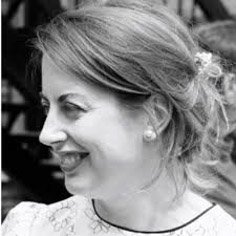 Katharine Stout has been Head of Programme at the ICA (Institute of Contemporary Arts) since 2013. She was Curator of Contemporary Art at Tate Britain from 1999 to 2013. In 2001, she co- founded the Drawing Room, the major European non-profit organization for contemporary drawing. She also was the contemporary art consultant at the National Maritime Museum, Greenwich where she inaugurated the contemporary art program. She has written numerous texts on contemporary British and international art. Her book, Contemporary Drawing: 1960s to Now was published by Tate in Autumn 2014., Curator, Head of program at the Institute of Contemporary Arts (ICA), London, UK; Michael WoolworthBiography
Katharine Stout has been Head of Programme at the ICA (Institute of Contemporary Arts) since 2013. She was Curator of Contemporary Art at Tate Britain from 1999 to 2013. In 2001, she co- founded the Drawing Room, the major European non-profit organization for contemporary drawing. She also was the contemporary art consultant at the National Maritime Museum, Greenwich where she inaugurated the contemporary art program. She has written numerous texts on contemporary British and international art. Her book, Contemporary Drawing: 1960s to Now was published by Tate in Autumn 2014., Curator, Head of program at the Institute of Contemporary Arts (ICA), London, UK; Michael WoolworthBiography Michaël Woolworth is a publisher and an American Art Printer. He founded his company in Paris in 1985, focused on the realization of original and limited editions with contemporary artists such as Steve Locke, Catherine Opie, Josiah McElheny, and Amy Sillman. His space, located on Place de la Bastille, is a printing house, a gallery (exhibitions on contemporary artworks), as well as a venue for meetings, lectures, projections, and concerts., Editor and Print Master, Paris, France; and Brett LittmanBiography
Michaël Woolworth is a publisher and an American Art Printer. He founded his company in Paris in 1985, focused on the realization of original and limited editions with contemporary artists such as Steve Locke, Catherine Opie, Josiah McElheny, and Amy Sillman. His space, located on Place de la Bastille, is a printing house, a gallery (exhibitions on contemporary artworks), as well as a venue for meetings, lectures, projections, and concerts., Editor and Print Master, Paris, France; and Brett LittmanBiography Brett Littman has been the Executive Director of The Drawing Center since 2007. Previously he was the Deputy Director of MOMA PS1, Co-Director of Dieu Donné, and Associate Director of UrbanGlass. He has contributed news and commentary to a wide range of international publications and critical essays to many exhibition catalogues. As a curator, Littman has organized exhibitions for The Drawing Center and other non-profits and galleries worldwide..
Brett Littman has been the Executive Director of The Drawing Center since 2007. Previously he was the Deputy Director of MOMA PS1, Co-Director of Dieu Donné, and Associate Director of UrbanGlass. He has contributed news and commentary to a wide range of international publications and critical essays to many exhibition catalogues. As a curator, Littman has organized exhibitions for The Drawing Center and other non-profits and galleries worldwide..
In addition, before his passing, the late artist TungaBiography President of the Jury. Tunga is one of the leading Brazilian artists of his generation. He expresses himself through sculpture, installation, performance, and drawing. The mineral world as well as body affects are his work’s great influences. Tunga is based in Rio de Janeiro and his work can be seen in permanent collections of major museums and institutions throughout the world. In 2014, he presented the series of sculptures and drawings entitled From La Voie Humide, exhibited in galleries from New York, Sao Paulo, London, Torino, and recently at Domaine de Chaumont-sur-Loire, for the 2015 Festival of Arts & Nature., who was the President of the Jury of the Prix Canson for the last two years, established a residency program at his home in Brazil, which will accommodate the winner of this year’s Prix.
President of the Jury. Tunga is one of the leading Brazilian artists of his generation. He expresses himself through sculpture, installation, performance, and drawing. The mineral world as well as body affects are his work’s great influences. Tunga is based in Rio de Janeiro and his work can be seen in permanent collections of major museums and institutions throughout the world. In 2014, he presented the series of sculptures and drawings entitled From La Voie Humide, exhibited in galleries from New York, Sao Paulo, London, Torino, and recently at Domaine de Chaumont-sur-Loire, for the 2015 Festival of Arts & Nature., who was the President of the Jury of the Prix Canson for the last two years, established a residency program at his home in Brazil, which will accommodate the winner of this year’s Prix.
2016 Prix Canson Finalists
{ Images with an * in the caption indicates that the work exhibited at The Drawing Center. }
[foogallery id=”8386″]
Njideka Akunyili Crosby – Prize Recipient
[foogallery id=”8377″]
Ruby Onyinyechi Amanze
[foogallery id=”8343″]
David Shrigley
[foogallery id=”8393″]
Bethany Collins
[foogallery id=”8402″]
Lucy Skaer
Scenes from the Awards Ceremony, July 21, 2016.
[foogallery id=”8419″]
Previous winners of the Prix Canson have been: Fabien Mérelle (2010), Ronald Cornelissen (2011), Virginia Chihota (2013), and Simon Evans (2014).
Romeo Alaeff is a visual artist from New York City, living in Berlin. He is the founder and Editor in Chief of Lines & Marks.
![Njideka Akunyili Crosby, "Nwantinti," 2012.
Acrylic, charcoal, pencil color, collage and transfers on paper.
5.57 ft. x 8 ft. [Photograph by Marc Bernier. Image Courtesy of the artist and Victoria Miro, London]](https://linesandmarks.com/wp-content/uploads/njideka-akunyili-crosby_nwantinti-2012-1170x658.jpg)

